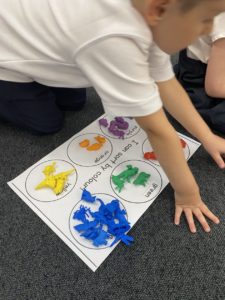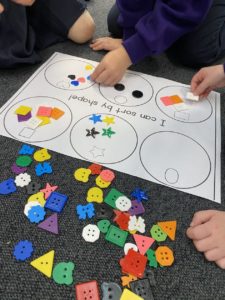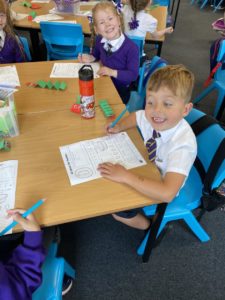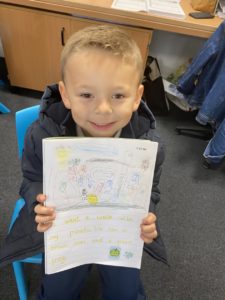Literacy Phonics and Active Spelling Our sound was “ss”. We used picture writing to illustrate these words. We also wrote each spelling word out 3 times using different colours. Reading We used our group text, skimming and scanning skills. We chose 3 letters from the alphabet, looked through our book and wrote down a list … Continue reading P3 R10’s Learning Journey WB 14/9/20 →
Literacy
Phonics and Active Spelling
Our sound was “ss”. We used picture writing to illustrate these words. We also wrote each spelling word out 3 times using different colours.
Reading
We used our group text, skimming and scanning skills. We chose 3 letters from the alphabet, looked through our book and wrote down a list of words which began with these 3 letters.
Writing
We used some of this week’s spelling words to write dictated sentences in our Literacy jotters. We also created a Wanted poster using a chosen character from our reading book. We wrote our weekend news in our News jotter.
Talking and Listening
We shared our weekend news by playing a game called Ping Pong. We were only allowed to talk when holding the ball. After throwing the ball (choice of under arm/over arm throw) to our partner, we listened to our peers sharing their weekend news. Playing this game was such great fun! 
In preparation for creating our Wanted poster, we worked in trios and discussed what our Wanted poster should include and look like.
Numeracy
Mental Maths
Our focus was Counting. We counted forwards in groups as well as a whole class. We also made a good attempt at completing our Counting Backwards challenge  .
.
We also played some Mental Maths games called Around The World and Beat The Teacher. This was to reinforce and consolidate our counting skills and knowledge of the number which comes before and the number which comes after within 100.
We revised and used the Counting On strategy to complete different Addition calculations. This also included sums with missing numbers in them.
We have consolidated our learning of Addition involving no carrying and have now moved onto Addition with carrying calculations.
We also recapped our knowledge of 2D and 3D shapes. We created beautiful patterns using 2 2D shapes and 2 colours of our own choice each time.
Health and Wellbeing
We watched a video clip to help with our whole class discussion about Road Safety. Using the Stop, Look, Listen and Think message, we planned our competition entry for the upcoming South Lanarkshire Council’s Road Safety Calendar Competition.
Literacy Work Gallery 










 This week in class we have been working hard to earn tickets to spend at our circus.
This week in class we have been working hard to earn tickets to spend at our circus.














 The boys and girls in room 1 have been working super hard this week.
The boys and girls in room 1 have been working super hard this week.